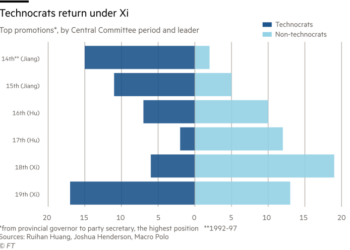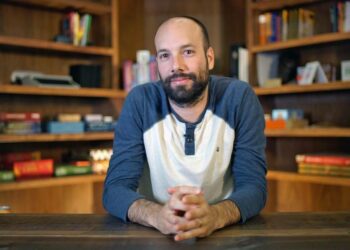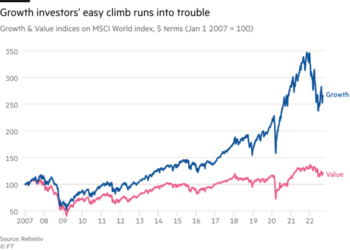In 2014 the United Arab Emirates set up a space agency and undertook to put a satellite called Hope in orbit around Mars in 2021, in time for the 50th anniversary of the small Gulf nation’s creation. For a country with no tradition and little expertise in space science and technology, the mission seemed absurdly ambitious in its scientific aims and compressed schedule.
The “$200mn gamble” has paid off handsomely, says Sarah Al Amiri, the 35-year-old computer engineer who was the project’s science lead and since 2020 has chaired the UAE Space Agency. Now that Hope has been observing Mars and analysing its atmosphere for more than a year, scientists’ initial doubts have turned to praise.
“The mission has exceeded expectations,” she says. “It’s not just me saying that. I’m quoting scientists who are not in the habit of over-exclaiming about achievements. Our coverage of different layers of the Martian atmosphere across the whole year is filling a major data gap and providing an understanding we’ve never had before.”
Since reaching orbit in February 2021, the spacecraft has been the first to observe the lights of an aurora flickering in the Martian night and to follow the evolution of a dust storm, Al Amiri adds.
Professor Andrew Coates, a planetary scientist at University College London who was not directly involved in the project, is impressed by the results coming in from Hope’s three instruments that image in ultraviolet, visible and infrared light. “It has found a niche looking at the atmosphere which complements very nicely what other missions to Mars are doing,” he says.
Al Amiri grew up in a prosperous professional family in Abu Dhabi, at a time of extremely rapid social, cultural and economic change. “Within a lifetime, [my parents’] generation has lived through different stages of national development that typically take 100 to 200 years,” she says. “It’s very hard to convey unless you’ve lived through it and I appreciate it all the more because I have reaped the benefits.”
Al Amiri adds that from a very young age she loved maths because of the logic that comes from it. “I was fortunate that we had access to very basic forms of programming in my primary school. Computers were becoming more accessible as I grew up. I wanted to understand what happened inside them and how they access the wider world.”
Al Amiri focused on maths and computer science in high school. As we talk in the UAE embassy in London, I remark on her accent, which sounds softly American. “I went to an international school that had people from many different backgrounds and many different countries around the world, so we spoke English all the time,” she replies. “My accent is an international school accent.”
After graduating with a masters degree in computer engineering from the American University of Sharjah in 2009, she started working on DubaiSat earth observation satellites and was soon promoted to head of research and development for the embryonic Emirates space programme.
Then came scientific leadership of the Mars mission, working with project director Omran Sharaf who was then just 30 — and running the youngest space science team in the world. It was quite a challenge.
“We had no science capabilities within the organisation,” she says. “It was engineering focused. We had about three months to develop the science concept of the mission.”
To make sure it would be as scientifically valuable as possible, Al Amiri drew extensively on the expertise of international partners, particularly the University of Colorado Boulder’s Laboratory for Atmospheric and Space Physics. Mission objectives filled gaps identified by the Mars Exploration Program Analysis Group, a consortium that works under the auspices of the US space agency Nasa to co-ordinate exploration of the red planet.
But the UAE did not want to buy in foreign expertise by throwing money at the project. Al Amiri estimates that the $200mn cost was about half what other space agencies would expect to spend on a planetary mission on the scale of Hope.
To save time and money, Al Amiri and her colleagues made a lot of calculated shortcuts. “Redundancy” — having back-up components in case of failure — was kept to a minimum and, rather than inviting proposals from external space researchers as is usual for such missions, the project team itself decided on the scientific programme. “It was very risky,” she concedes.
An immediate aim was to build up the UAE’s paltry scientific community as fast as possible. “We set up an apprenticeship programme,” Al Amiri says. “It was something that our international scientists were very hesitant about, because that’s not how you typically develop scientists, but we had a mission going and we had a lot of knowledge to develop.”
The longer-term ambition was to enthuse young Emiratis about science. “We wanted to drive STEM [science technology engineering and maths] education. The ripple effect of the mission’s success has been astonishing for us. I would liken it to the Apollo effect [of the US moon landings].”
Al Amiri’s promotion has been rapid. She is now UAE minister for advanced technology and chair of the UAE space agency, where she is planning new projects.
A probe will visit the moon in 2024 and a more ambitious mission is set to launch in 2028, flying past Venus and then visiting seven asteroids. “Looking at the similarities and differences between various types of asteroid should provide interesting results,” Coates comments.
Asked about her approach to leadership, Al Amiri invokes her “love of maths and the logic that goes behind it”. She approaches a problem as a computer engineer. “I see it as a potential opportunity, break it down to its basics and build it up as a solution.”
She learnt a lot about humanity on the Emirates Mars programme, she adds. “We had a lot of tough situations, moments where we doubted whether we could achieve the deadline, whether we could deliver a functioning spacecraft or functioning components. During those low points you see the human in each individual without all the layers. It was an interesting learning process for me working through that mission and I think it has helped me a lot in my current job.”
Al Amiri does not like the suggestion that, as a young woman leading a space agency, she is a pioneer. “No,” she says. “When we stop being astonished that women are in a certain position, that is when we remove some of the biases implicit in such questions.”
For Al Amiri the most important factor that will drive the UAE further into outer space “is a common sense of purpose. That is the ingredient that will get me and my teams across the finishing line,” she says.











